Updated 10/04/202 5
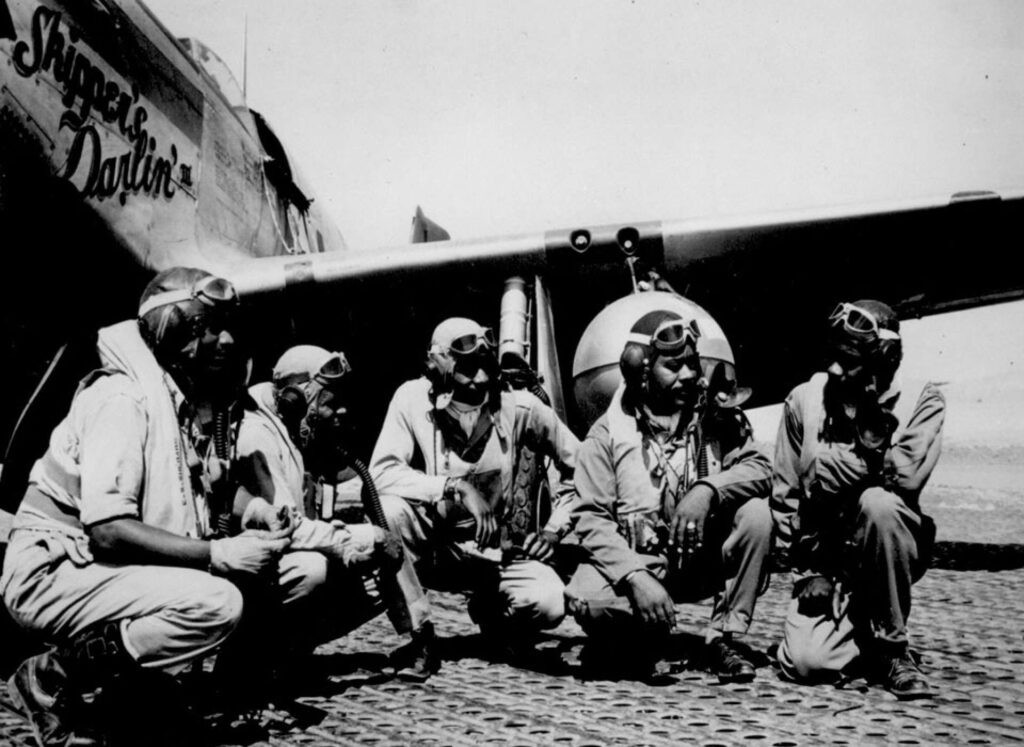
The role of the 1.5 million African-Americans who were part of the U.S. military has always been underexposed. Of these 1.5 million, 900,000 were sent to Europe.
The treatment of African-Americans at the beginning of World War II showed parallels with German anti-Semitism. Hitler, the greatest racist in Europe, was thus fought by an army in which racial segregation was a normal thing.
Most African-Americans were assigned to non-combat units at the start of the war and degraded to supply, maintenance and transportation services. They slept, ate and practiced separately from the white soldiers.
Towards the end of the war, the scarcity of troops caused the African-American soldiers to also serve as infantry, pilots, tank drivers, nurses and officers. The courage they showed was as great as the other soldiers. Yet they often could not enter a restaurant where their German prisoners were allowed to eat, but not them.
The most acclaimed African-American units in World War II were the 320th Barrage Balloon Battalion, for their deployment on the landings on Omaha and Utah Beach on June 6, 1944, the 614th Tank Destroyer Battallion, the Tuskagee Airmen and the Red Ball Express that transported half a million supplies from Normandy to the advancing troops in France.
The return to the US
The country in which the African-American soldier returned still considered them inferior. On the return trip by boat, they were not allowed to use the same facilities as the white soldiers. German prisoners of war were allowed to do so. The enemy, because he was white, was obviously superior to the African-American soldier.
An arrangement to help veterans with their education, work and housing was largely not applicable to the African-American soldier. Loans to which veterans could claim had to get the support from the local bank. No bank in the southern states supported a loan to an African-American veteran.
On return, the hatred of African-American veterans seemed greater than against the civilians. In Europe, as liberators for the free world, they demanded some appreciation and respect. That was seen as provocation and that was fought with a lot of violence. It led to a revival of racist violence and greater popularity of the Klu Klux Klan.
The emancipation that the uniform brought to the African-American community gave a new impulse to the struggle for civil rights. Many veterans joined the movement. Yet the authorities quietly but effectively expressed their contribution to the Second World War. African-American soldiers were never nominated for the Medal of Honor, even if they had been exceptionally brave. Bill Clinton awarded this award to seven veterans in 1997. There was only one still alive.
The African-American soldier was not the only soldier of color in World War II. The British Army had 2.5 million Indian men and women. The French army consisted of 60% colored soldiers, the Tirailleurs Sénégalais and 250,000 North Africans. They were considered as inferior natives in their own ranks.
The number of people of color who participated in the battle has been deliberately rendered invisible. In the first months of 1944, the American and British generals insisted that no soldiers of color should be involved in the liberation of Paris. The liberator’s face had to be white.
614th Tank Destroyer Batallion
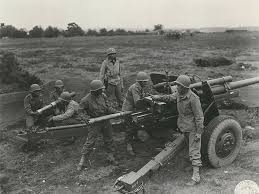
The 614th Tank Destroyer Batallion was landed in Normandy on October 8 and was stationed south of Metz. On 1 December, at the first action at the front, the unit succeeded by accurately eliminate several bunkers and a German 88mm cannon. On December 5, the group was merged with 103rd Infantry Division and stationed at Gougenheim in France. They were initially used as reaction power in a possible German armor breakthrough. But because no massive tank attacks occurred, the unit with the anti-tank cannons was added to various infantry units in support. They were praised by their colleagues for their commitment and precision in shelling.
333rd Artillery Batallion
The 333rd Artillery Batallion consisted entirely of African-Americans led by a white commander and was part of the VIII corps. During the Battle of the Bulge, 11 men of the battalion were forced to surrender on 17 December 1944 in the village of Wereth by the First SS Armoured Division (Schnelle Gruppe Knittel). They surrendered without resistance, but were beaten, tortured and eventually shot dead. The incident is known as the Wereth 11 Massacre.
Red Ball Express
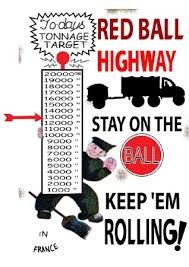
After the outbreak of the beaches in Normandy, the front had to be provided with new supplies on every level. 28 Divisions used 750 tonnes of stocks per day, totaling 21,000 tonnes. This all happened with trucks and so the Red Ball Express was born. The trucks were equipped with red balls and the route from Arromanches was also equipped with red balls and closed to the other traffic. A northern route was followed to the front and a southern route back from the front. On the narrow French roads, one saw one large stream of trucks, accompanied by jeeps.
The transport was supposed to be a simple goal for the German Air Force but due to lack of aircraft, transport was hardly attacked.
The biggest problem was the maintenance of the trucks, enough drivers who often fell out due to the lack of sleep and the mud on the French roads.
At its peak, 12,500 tons of stock was transported by 5958 trucks daily. The Red Ball Express functioned until 16 November 1944 when the port of Antwerp became available and sufficient train connections had been repaired.
75% of drivers were African-American.
Other stock routes:
Green – Diamond: Surroundings Cherbourg
White Ball Express: Le Havre – Paris
Lions Express: Bayeux – Brussels
ABC Express – Surroundings Antwerp
Margraten
The African-Americans also had to take care of the mining of graves and to look after the dead. That was a tough physical task and mentally actually unbearable. Every day the victims of the Ardennes offensive were brought in with trucks. Some soldiers had died a few days ago, others died back for months. Coffins were not available, the remains were buried in mattress covers. There are around 8300 people buried in Margraten. More than 10,000 remains were repatriated to the US.
The American African-Americans were aware of the racism in their country and avoided the white colleagues. Yet it comes to a confrontation in Maastricht once. A group of African-Americans visit a cafe on a free night where there were also white Americans. They are forcing African-Americans to leave. After they have left the café, they are chased and they are struck with such force that one of the African-Americans does not survive. The case is not being investigated, case closed, no one is being prosecuted.
320th Barrage Balloon Battalion
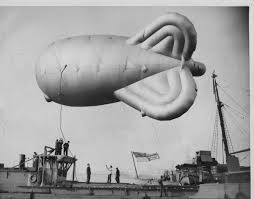
The 320th Barrage Balloon Battalion was founded in 1942. In 1943, the battalion was transferred to England. It was the only American Barrage Balloon unit in France that was made up entirely of African-Americans and was 621 men in size.
The first order was to increase the hydrogen-filled air defense balloons from the beaches of Utah and Omaha beach in defense of any attacks by the German Air Force. General Eisenhower praised the performance of the unit to carry out the mission with great courage and determination under hellish conditions as part of the air defense system on the beaches.
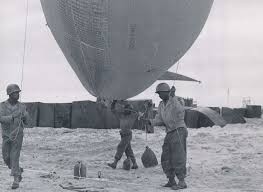
The battalion served 140 days in France, their task came to an end on October 24, 1944 and was sent back to the US to train for the deployment in the war in the Pacific.
Five medics were among the first to land on Omaha beach at 9:00 a.m. on June 6, 1944. One of them, Waverley Woodson Jr., was nominated for the Medal of Honor, but he never received this award. He was posthumously rewarded in 2024 with the Distinguished Service Cross, the second highest award for heroism shown in combat situations.
Tuskagee Airmen
The Tuskagee Airmen was a group of African-American Air Force soldiers. They formed the 99th Pursuit (later Fighter) Squadron, the 332nd Fighter Group and the 477th Medium Bombardment Group. This involved not only pilots but also navigators, bombers, mechanics, instructors, nurses, cooks and other support staff.

The 477th Medium Bombardment Group trained with B25 Mitchel bombers, but was never deployed anywhere until after World War II. The 99th Fighter Group was stationed in French Marocco, Tunisia, Sicily and the mainland of Italy and flew with Curtiss P40 and later Bell P39 aircraft. The group was later combined with 100th, 301st and 302nd Fighter Squadrons and thus formed the 332nd Fighter Group. The 332nd Fighter Group was equipped with P47 Thunderbolts and finally with the P51 Mustang to which the group owes its fame. The planes were fitted with a red tail, a red nosecone, yellow propeller tips and yellow bands on the wings. It earned the unit the nickname “Red Tails”. The group escorted bombers on their way to and from the German targets and fought many battles with the German Luftwaffe. They flew a total of 1578 combat missions, 179 guidance missions, destroyed 112 enemy aircraft in aerial combat, 150 aircraft on the ground, 950 trains and other vehicles, 1 torpedo boat and 40 other ships.
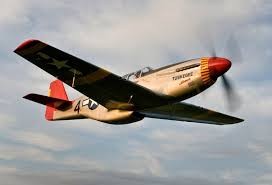
Many bomber crews preferred to be escorted by the Red Tails. Missions that were supervised by this group suffered the slightest loss of bombers and the group was therefore frequently asked by the Bomber Command. Upon seeing the red tails on the planes, German pilots were often discouraged from attacking the bombers.
The fate of Walter Peyton Manning

In an aerial battle over Austria, Walter Manning was shot down in his Tuskagee Airmen Mustang. He managed to save himself with his parachute and when he reached the ground he was surrounded by angry Austrians who realized they were going to lose the war. Manning was picked up by German military police and jailed. A large group of angry Austrians arrived at the prison with ropes to take revenge on Manning, encouraged by the SS. The Nazi propaganda was clear: kill black pilots in the same way as white Americans kill black Americans in their homeland. German propaganda was aware of the racial conflict in the United States and used it to their own advantage.
Although he was initially still protected by the existing laws of war, it soon became too much for the Nazis and the Austrians and Manning was severely assaulted and eventually hanged. His body was thrown into a small grave, where a courageous unknown citizen later risked his life to provide the tomb with a wooden cross. When the Americans later discovered the grave, after some investigation, they discovered that Manning had been abused and murdered purely by the color of his skin.
Manning flew 50 missions. Even during his last mission, before he had to jump, he shot down a German plane. He left behind a family and a devoted fiancee. He died on a piece of rope, exhibited as an expression of hatred and fear, while trying to serve his country as best he could.
6888e Central Postal Directory Battalion
In the middle of World War II, the 6888th Central Postal Directory Battalion, nickname Six Triple Eight, (almost) exclusively made up of African-American women, is sent to Europe as the only African-American female unit to carry out an important mission: to deliver the mail to American soldiers at the front.
The opposition of the whites, from general to soldier, within the armed forces was enormous. The women were discriminated and portrayed as totally useless and hugely opposed.
Yet the 6888th continued under the direction of Charity Adams and were stationed in Birmingham under appalling conditions in an old neglected school building without heating and water.

There was great dissatisfaction with the functioning of the delivery of the post, from the front to home and vice versa. Millions of undelivered postal items were stored in a number of warehouses. Not being able to communicate with the soldiers at the front caused a bad mood at the fathers and mothers’ home and with the soldiers themselves. So morality had to be boosted and that became the task of the 6888th.
The time for figuring out and delivering the mail items was estimated at 6 months, but due to a huge commitment of the women, 17 million letters and parcels had already been identified and delivered within three months. The unit was then stationed in Rouen to repeat the miracle. Here, too, the women managed to resolve a backlog of three years within five months.
Most members worked as postal officers, but the unit was able to take care of itself and so cooks, technicians and other support functions were also filled. The group’s motto was “No mail, low morale “.
Charity Adams was honored upon returning to America for her leadership and was promoted to lieutenant colonel, the highest rank in the Women’s Army Corps (WAC).
Source:
Forgotten – Linda Hervieux
ISHistory.com
Decorrespondent.nl
Oorlogsbronen.nl
Biography.com
Various Wikipedia articles